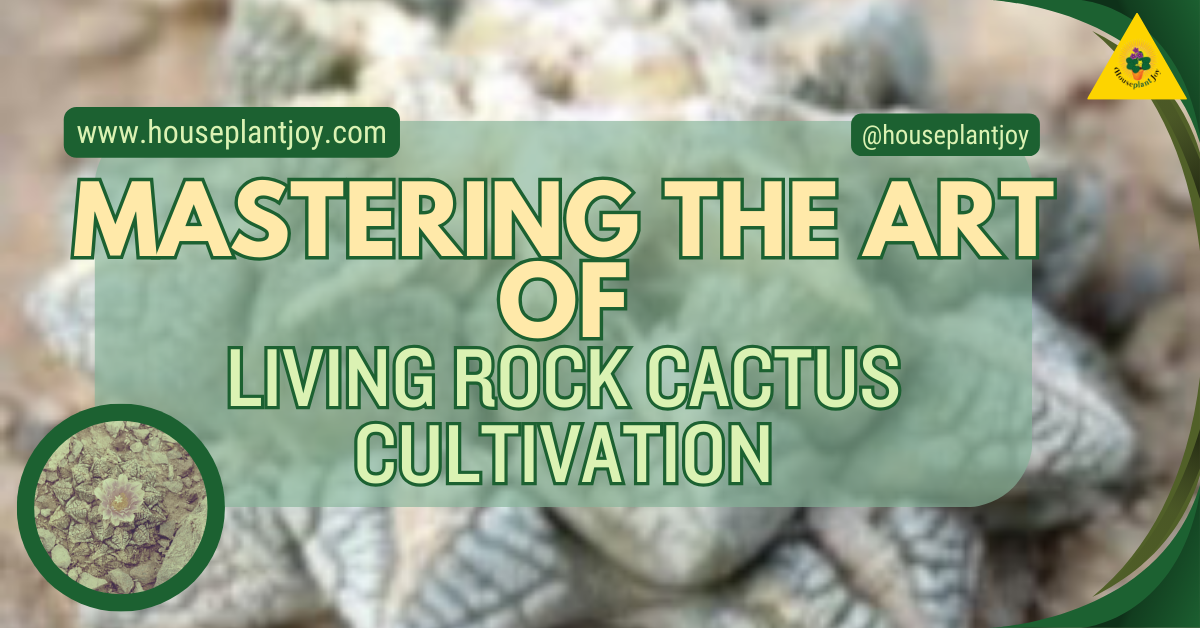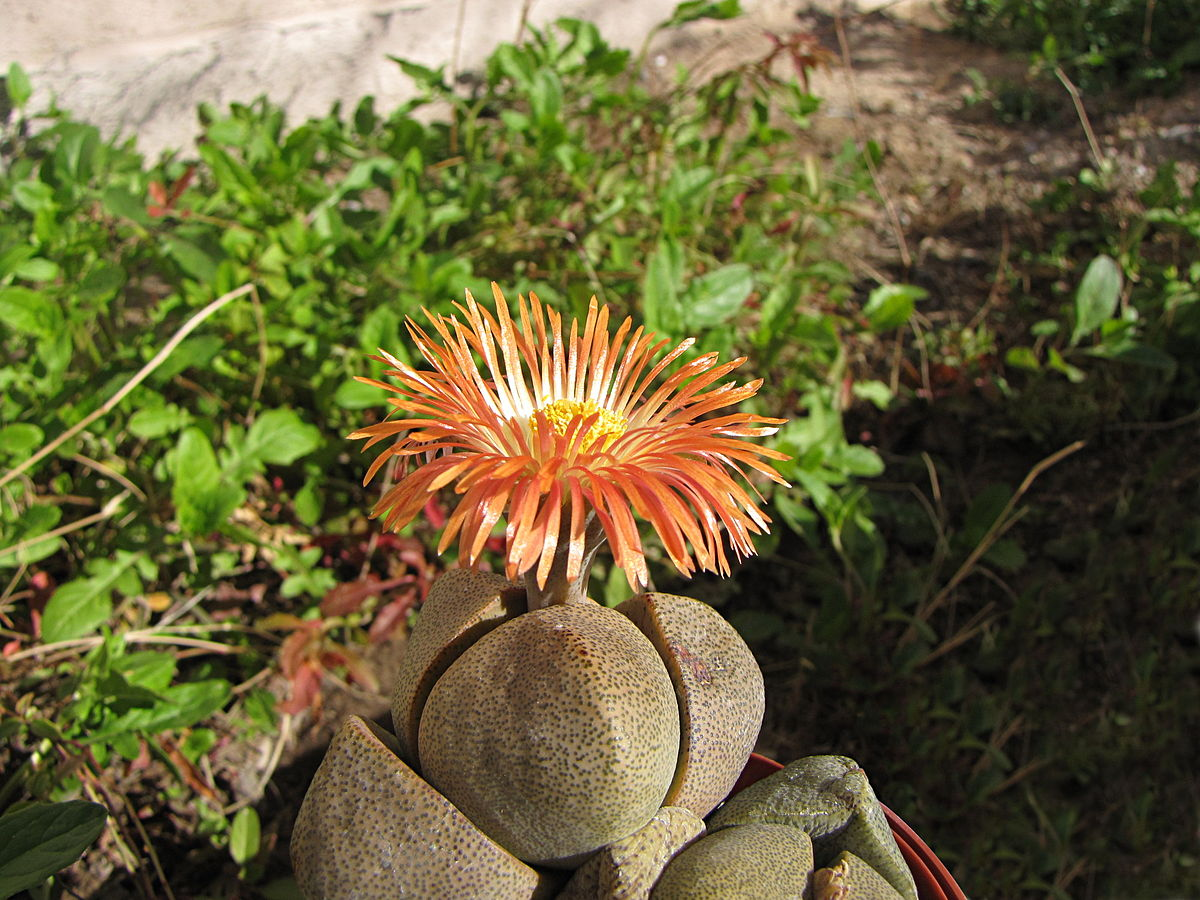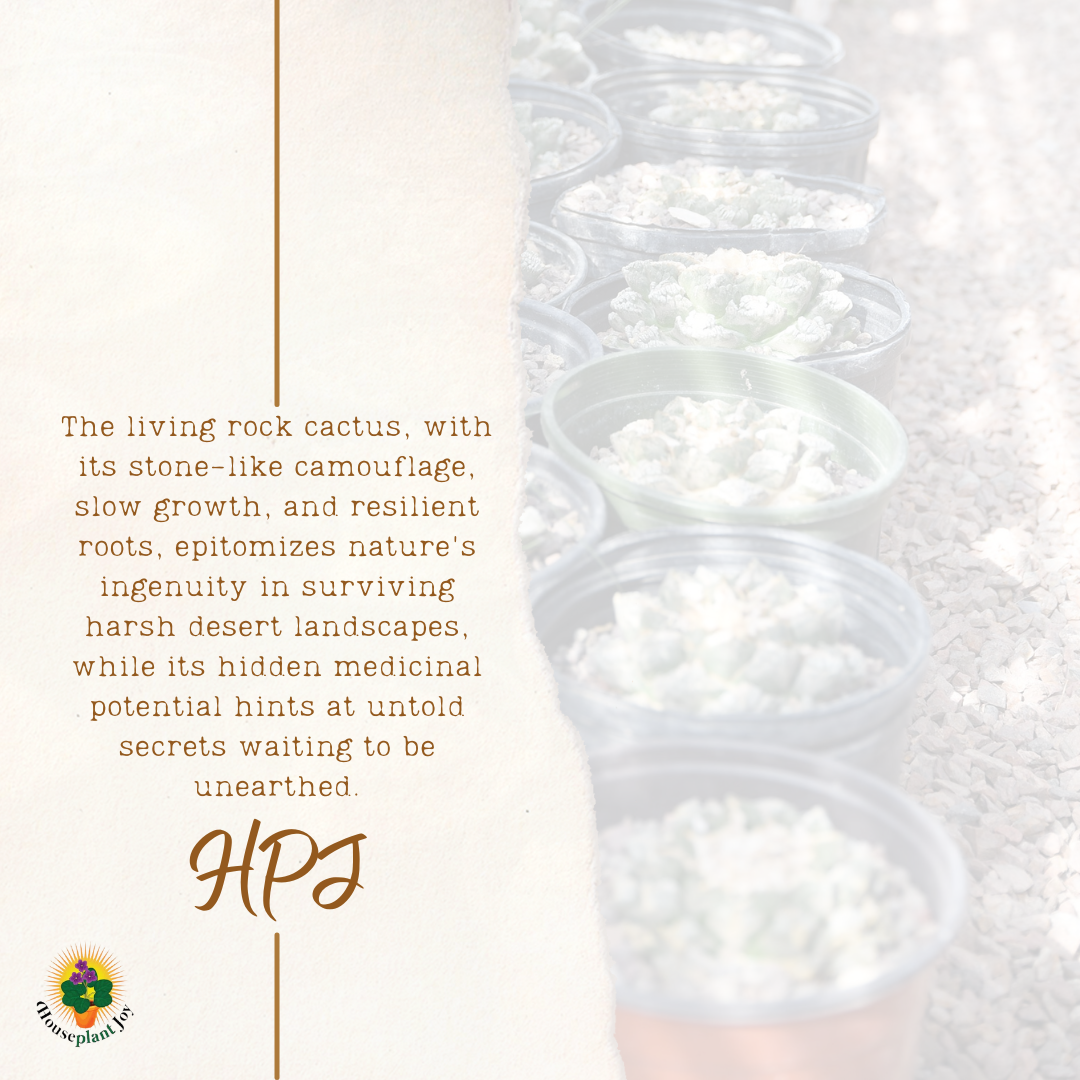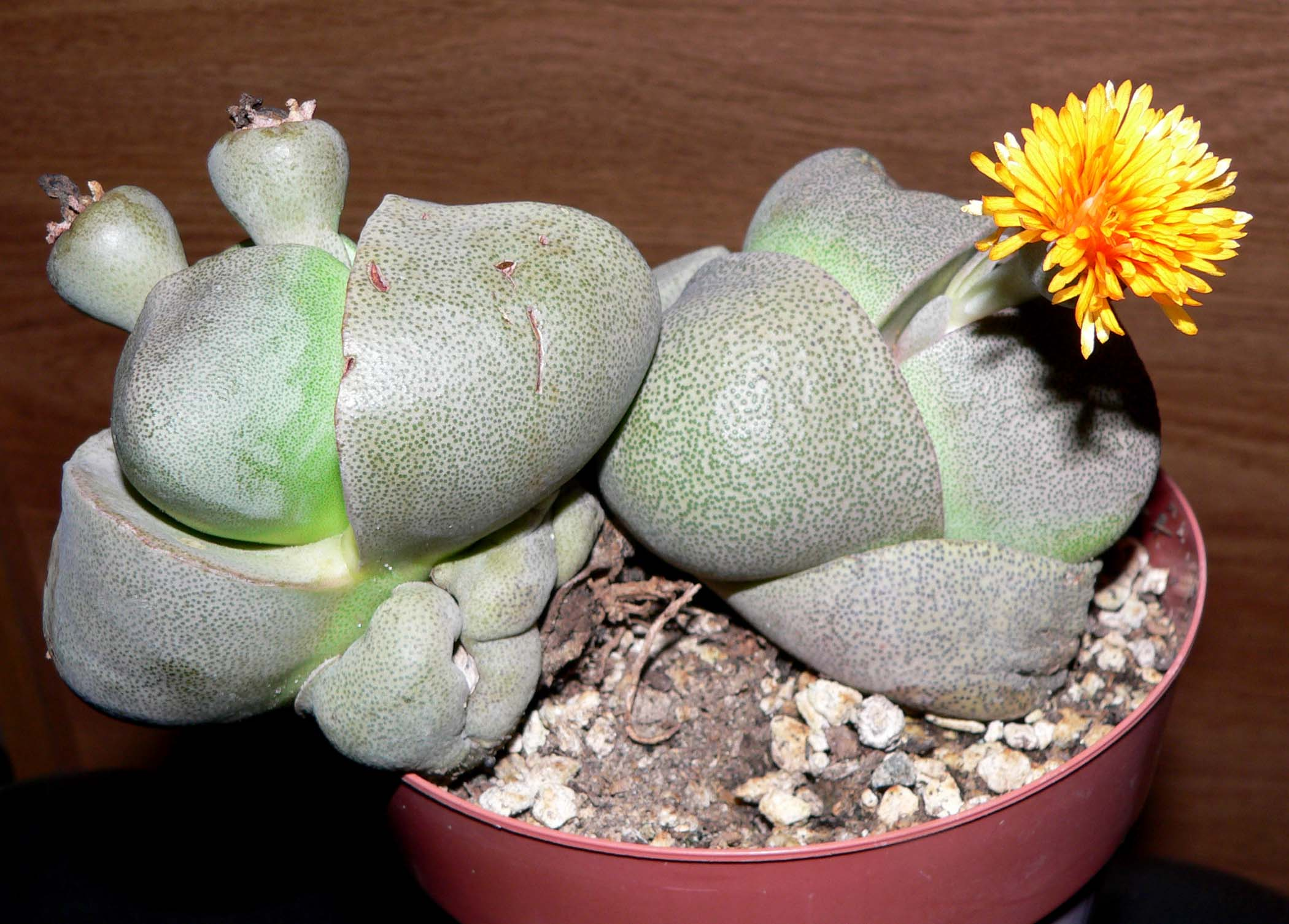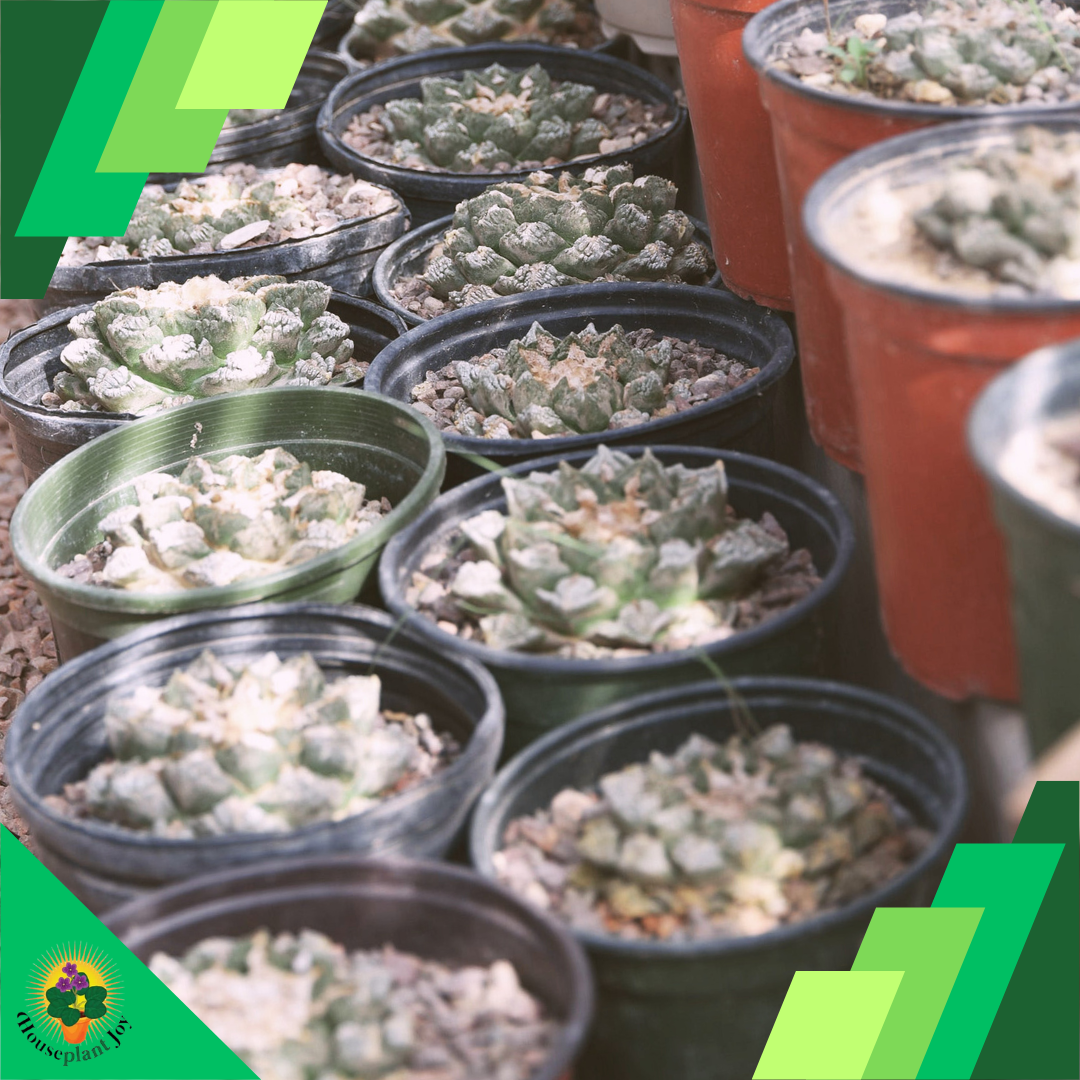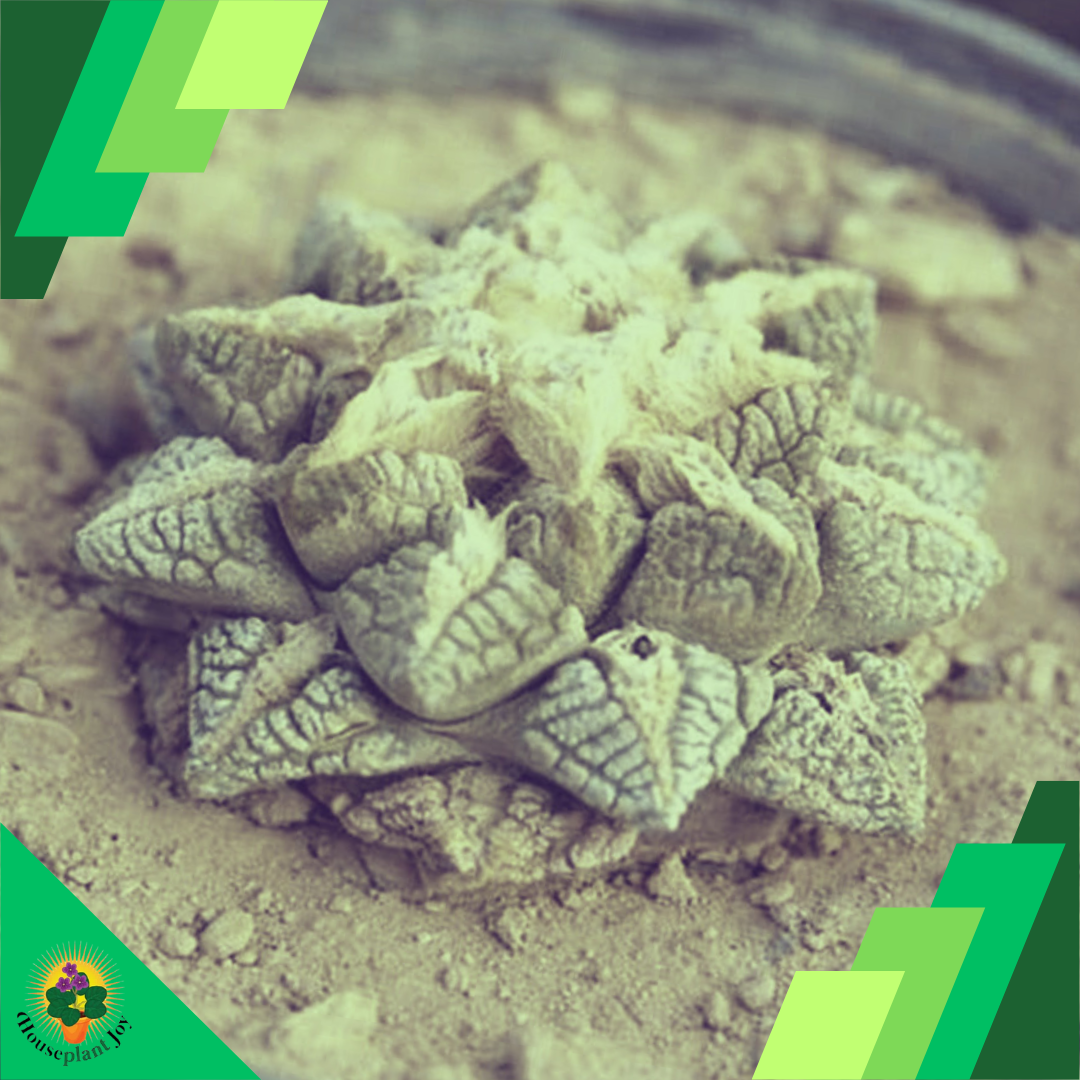HousePlantJoy is supported by our audience. When you purchase through one of our links, we may earn a small affiliate commission. As an Amazon Associate I earn from qualifying purchases. Your cost is not affected.
==================
I started growing Living Rock Cacti because I was fascinated by their unique look and survival strategy. I faced several setbacks, from overwatering to finding the perfect spot in my house. So, this is the result of my experiences. It’s here to help you avoid my mistakes and share what I’ve learned about caring for these special plants.
Whether you’re an experienced succulent enthusiast or just starting gardening, this journey will provide you with the knowledge and techniques necessary to help these remarkable cacti reach their full potential.
Essential Guide to Growing Living Rock Cactus
Photo by: Wikipedia
I’ve always been fascinated by the variety and resilience of succulents, but my journey with Living Rock Cactus, or Pleiospilos Nelii, has been particularly enchanting. Native to South Africa, these succulents are not your ordinary green plants. They’re also named “split rock” for a good reason—they can split their leaves as they grow. It’s like watching a slow, living transformation that mimics their natural habitat’s cracked, rugged terrain.
This special adaptation isn’t merely decorative; it serves as a survival tactic, enabling Living Rock Cactus to seamlessly merge with their environment and evade predators while beautifully echoing nature’s raw essence. What distinguishes them is their unique compact size and rosette-like growth pattern. Their intriguing appearance, with warty tubercles forming a textured surface, occasionally embellished by a tuft of woolly hairs at the center, further sets them apart.
It’s these quirky features that initially drew me to them. They’re survivors, capable of enduring extreme climates and temperatures that would wilt less hardy plants. Their ability to thrive in varied conditions and low maintenance needs have solidified their place in my heart (and my garden) as a favorite.
Key Highlights
- Living Rock Cacti, or Pleiospilos Nelii, are native to South Africa and have a fascinating survival strategy—they can split their leaves as they grow, mimicking cracked rocks in their natural habitat’s rugged terrain.
- These succulents have gained renown for their resilience and are becoming increasingly sought-after among gardeners due to their distinctive appearance and minimal maintenance requirements.
- Providing the right care is essential for the optimal growth and health of Living Rock Cactus. Key tips include ensuring proper lighting, watering, using the right soil and potting, fertilizing, the right temperature, and looking out for pests and diseases.
- Mastering propagation techniques such as division and seed planting allows enthusiasts to expand their collection of Living Rock Cactus and share the beauty of these unique succulents with others.
Why Are They Popular Among Gardeners?
Photo by: LLIFLE
For several reasons, the Living Rocks has gained popularity among gardeners. One of the main reasons is their unique appearance, which evokes nature in its raw form. These succulents resemble rock-like, with leaves that split as they grow, resembling cracked rocks. This distinctive feature adds interest and intrigue to any garden or succulent collection, setting them apart from other cacti.
Another reason for their popularity is their low maintenance needs. Living Rocks thrive in full sun and have a growing season during early spring. Requiring minimal watering and capable of enduring drought conditions, they prove to be an excellent option for busy gardeners or individuals with limited time for plant maintenance.
Additionally, Living Rock Cactus are compact, making them suitable for indoor and outdoor gardens. Their ability to thrive in full sun makes them versatile for various garden settings. Whether your gardening space is a small balcony or a sprawling backyard, Split Rock Succulents have the potential to enhance your environment with their beauty and uniqueness, seamlessly complementing other cacti species.
Rock Solid Care: Essential Tips for Living Rock Cacti
Photo by: Wikipedia
Here’s a rundown of essential care tips for your rock cactus:
Light
Rock cactus flourishes in ample bright, indirect sunlight. Aim to provide it with at least six hours of sunlight each day. If needed, supplement with a grow light.
Water
Being a drought-tolerant succulent, rock cactus doesn’t need frequent watering. Overwatering is one of the main reasons these plants struggle—only water when the soil is completely dry to the touch. In winter, you only need to water once a month.
Soil
Choose soil that drains well, allowing water to pass through easily. A blend of cactus potting mix or potting soil, perlite, and sand is highly effective.
Potting
Pick a pot with drainage holes slightly larger than the plant’s root ball. You can also plant it in handmade ceramic containers to add a touch of artisanal charm.
Temperature
Rock cacti prefer warmth, ideally between 65-80°F (18-27°C). They can handle temperatures down to 50°F (10°C), but shielding them from frost is wise.
Fertilizer
These cacti don’t demand frequent feeding. A light dose of balanced fertilizer once a year in spring suffices.
Repotting
Repot only every few years or when it outgrows its container. Aim for spring or summer when the weather is warm.
In Caring for Your Rock Cactus, Keep an Eye Out for:
- Fluffy white mealybugs or tiny bumps (scale insects) – wipe them off or use an insecticidal soap spray to eliminate them.
- Mushy roots from overwatering – reduce watering and use well-draining soil.
With these care basics, your rock cactus can thrive for years and grace you with its beauty and occasional blooms.
Growing Split Rock: Mastering Propagation Techniques
Photo by: Mesa Garden
Here are two ways to propagate your Split Rock (Pleiospilos nelii):
Division
This method is ideal for mature Split Rocks with offsets or pups at the base. Here’s how to do it:
- Timing: Best done in spring, before new leaves emerge.
- Tools: Grab a sharp, clean knife or pruners.
- Process: Gently separate the offsets from the main plant using your sterilized tool. Ensure a clean cut without harming the roots of either plant.
- Planting: Let the cut end of the offset dry out for a few days in a dry, well-ventilated spot. Then, lightly plant it in a pot with a well-draining cactus mix and water.
Seeds
This method requires more patience but can be fulfilling.
- Timing: Sow seeds preferably during warm summer months.
- Preparation: Use a shallow container with drainage holes filled with well-draining cactus mix. Dampen the soil lightly.
- Planting: Sprinkle the seeds evenly across the soil surface and gently cover them with a thin layer of sand.
- Light and Moisture: Provide bright, indirect sunlight and keep the soil consistently moist, not soggy. To retain moisture, you can use a humidity dome.
- Germination: It may take weeks for seeds to sprout. Once they do, remove the dome and ensure good airflow.
- Care: As seedlings grow, thin them out as needed and gradually reduce watering as their roots develop.
Seasonal TLC: Nurturing Your Living Rock Cactus Year-Round
Ah, the changing seasons—each one brings its own rhythm and challenges for our resilient Living Rock Cacti. Let’s dive into how to keep these little wonders thriving no matter what Mother Nature throws our way.
Spring Awakening: As the world bursts into life, our cacti awaken from their winter slumber. With the increasing daylight and warmer temperatures, it’s time to ramp up their care. Gradually increase watering frequency as they emerge from dormancy, but keep an eye out for late frosts and provide protection if needed. Position them to soak up those rejuvenating rays of spring sunlight, promoting healthy growth.
Summer Splendor: Ah, summer—the season of abundant growth and vibrant blooms. Keep your Living Rock Cacti hydrated but beware of overwatering in the scorching heat. Ensure they have ample airflow to prevent heat stress, and consider providing a bit of shade during the hottest part of the day. Embrace their natural beauty as they soak up the sunshine, rewarding you with occasional bursts of colorful blooms.
Fall Transition: As temperatures begin to cool, it’s time to prepare our cacti for the approaching winter. Gradually reduce watering as daylight decreases and temperatures drop. Watch for signs of dormancy and adjust their location to protect them from chilly drafts. It’s also a perfect time for a gentle grooming session, tidying up any spent blooms or dead leaves to keep them looking their best.
Winter Rest: Ah, the quiet beauty of winter—our cacti’s time to rest and rejuvenate. With reduced daylight and cooler temperatures, it’s time to ease off on the watering. Ensure they’re shielded from frosty drafts and provide extra insulation if needed, especially for outdoor specimens. Let them rest peacefully, knowing they’ll emerge refreshed and ready for another season of growth when spring arrives.
By tuning into the unique needs of our Living Rock Cacti throughout the seasons, we can ensure they thrive year-round, bringing joy and beauty to our homes and gardens. So, let’s embrace the changing seasons and continue nurturing these remarkable plants with care and love.
Flourishing Your Split Rock Cactus
Growing and caring for Living Rock Cactus, or Pleiospilos Nelii, offered a uniquely enchanting experience for succulent enthusiasts. Their remarkable resilience and intriguing appearance made them stand out in any garden or succulent collection. Living Rock Cactus became increasingly popular among gardeners seeking distinctive and easy-to-care-for plants due to their ability to thrive in varied conditions and their low maintenance needs.
Ensuring your Living Rock Cactus achieves optimal growth and health requires giving them proper care. Attention to detail was key, from proper lighting and watering to selecting the right soil and container. Additionally, being mindful of common issues like pests and overwatering helped keep the plants thriving.
Propagation was another aspect of Living Rock Cactus cultivation that added to the fascination of these plants. Whether through division or seeds, mastering propagation techniques allowed enthusiasts to expand their collection and share the beauty of these unique succulents with others.
By following the essential care tips outlined in this guide and mastering propagation techniques, enthusiasts could cultivate healthy and flourishing Living Rock Cactus plants that continue to captivate and delight for years. So, they embraced the journey of nurturing these remarkable succulents and let the beauty of nature’s resilience unfold in their gardens. If you want to explore a diverse selection of unique succulents and discover expert tips and resources to help you cultivate a thriving indoor garden, visit the Houseplant Joy website.
Frequently Asked Questions
Can Split Rock Succulents Survive in Cold Climates?
Split Rock Succulents are vulnerable to cold temperatures and may suffer damage or even perish in freezing conditions. To ensure their survival, it is advisable to protect them from extreme cold or bring them indoors during the winter months.
Does the Rock Cactus Bloom?
The rock cactus, also known as Split Rock (Pleiospilos nelii), does indeed bloom, adding another fascinating dimension to its charm. You’ll often see these blooms making their debut in the springtime, with a single small flower emerging from the crack between its two fleshy leaves. What’s even more captivating is the variety of colors these flowers can boast—magenta, yellow, or white, adding a vibrant splash to your succulent display!
Do I Need to Prune My Rock Cactus?
There is no need to reach for the pruning shears when it comes to your rock cactus. Pruning isn’t necessary for their happiness.
Here’s why:
- They naturally grow in a tidy form, so no trimming is needed.
- Pruning could accidentally remove flower buds; you wouldn’t want to miss out on those blooms!
The only time to snip is if you spot anything dead, diseased, or mushy. In that case, grab a sharp tool and carefully remove the icky bits.
Welcome to the Houseplant Joy Community!
Discover a haven of greenery and camaraderie with us!
- Instagram: houseplantjoy20
- Pinterest: houseplantjoy
- Twitter: houseplantjoy
- YouTube: houseplantjoy
- TikTok: houseplantjoy
Uncover:
- Engaging content
- Honest product reviews
- Vibrant community interactions
Join us across our platforms and let’s cultivate joy together! #HouseplantJoy

